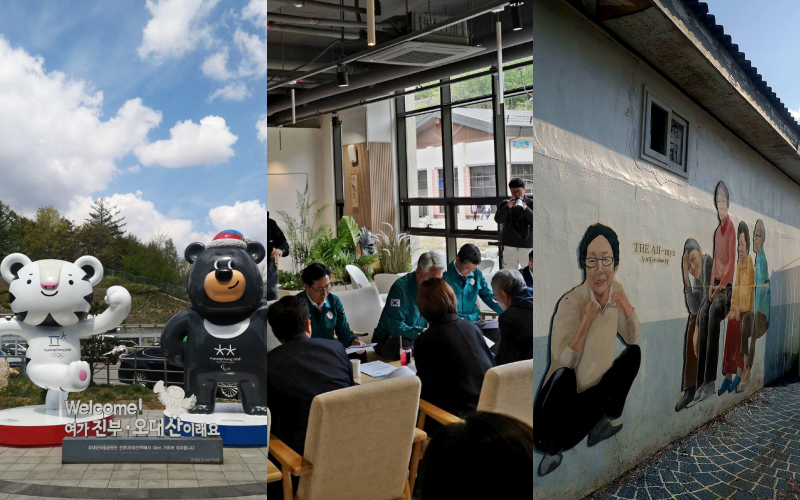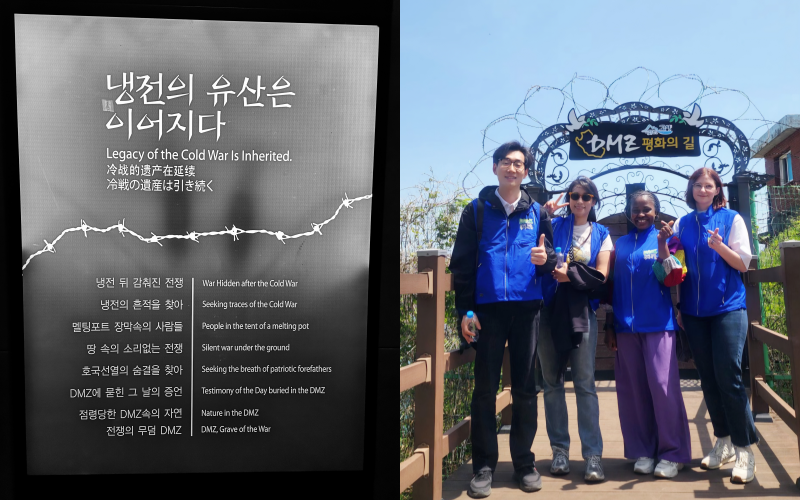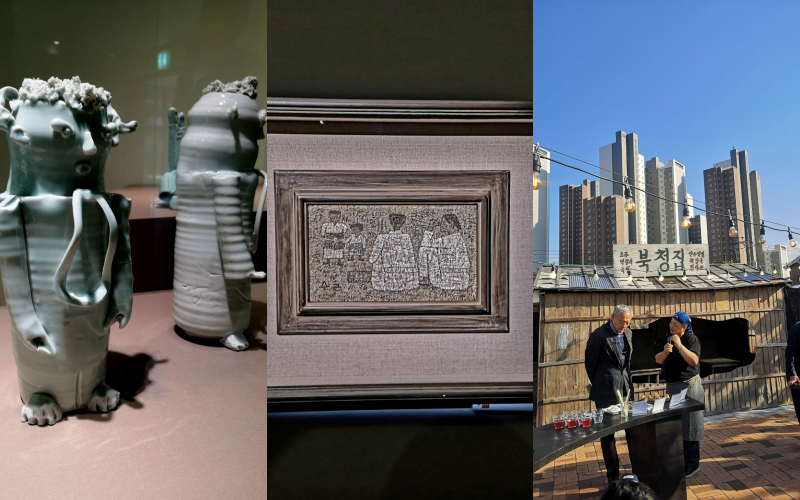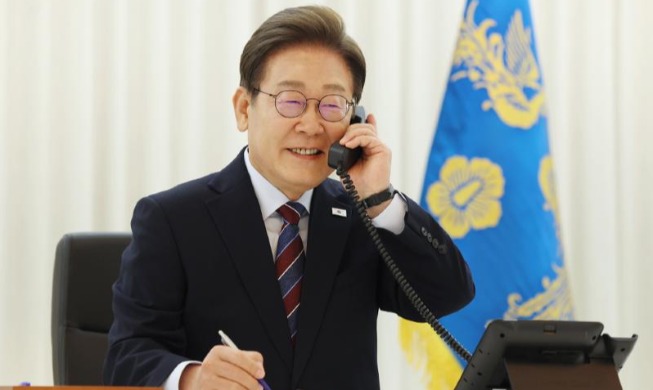- 한국어
- English
- 日本語
- 中文
- العربية
- Español
- Français
- Deutsch
- Pусский
- Tiếng Việt
- Indonesian
By Honorary Reporter Anna Krikun from Sweden
Photos = Anna Krikun
As part of a familiarization tour, I accompanied Minister of Culture, Sports and Tourism Yu In Chon on a two-day tour of Gangwon-do Province from May 7-8, hitting places like Gariwangsan Mountain, the city of Sokcho, Goseong-gun County section of the Demilitarized Zone (DMZ) and Yanggu-gun County.

The PyeongChang 2018 Winter Olympic and Paralympic mascots (left) remain at Jinbu Station; a meeting (center) is held between Minister of Culture, Sports and Tourism Yu In Chon and representatives of Gariwangsan Mountain on May 7; and a mural (right) in Abai Village reflects the history of residents who were refugees during the Korean War.
Olympic legacy preserved on mountain
Our journey began with a two-hour ride on the high-speed rail KTX from Seoul to Pyeongchang-gun County, which hosted the 2018 Winter Olympics. A scenic 30-minute drive through pristine mountain forests brought us to the Olympic legacy site.
On Gariwangsan Mountain, Minister Yu met with officials at the community center, discussing the county's development and answering media inquiries. The group then took a cable car to the summit to see panoramic views.
Coastal charm of Sokcho
In the afternoon, we went to Sokcho, a northeastern coastal city in Gangwon-do known for its beaches and seafood. The combination of azure waters, bright sunshine and gentle sea breeze created an unforgettable experience.
A highlight of our visit was Abai Village, whose name comes from a word in the dialect of North Korea's Hamgyeong-do Province for "friendly elderly man." Set up by refugees from the North after the Korean War, the community offers authentic North Korean-style cuisine, cultural performances and historical murals depicting residents' stories.

A sign (left) is displayed at the DMZ Museum and Honorary Reporters and Managers (right) from the Ministry of Culture, Sports and Tourism pose at the entrance to the DMZ Peace Trail
Inside Goseong-gun section of DMZ
Our DMZ tour included visits to Goseong Unification Observatory, Korea's northernmost viewing post, the DMZ Peace Trail and DMZ Museum. From atop the observatory, we viewed North Korean mountains and the striking blue waters of Hwajinpo Lake.
Walking the trail required visitor vests and military escort. The experience was both thrilling and sobering, knowing that we were in a conflict zone where North Koreans occasionally attempt to cross the border in wooden boats.
The museum provided insights into the Korean War, displaying North Korean propaganda materials and highlighting reunification efforts.

Works (left) are displayed at Yanggu Porcelain Museum; a work by Park Soo Keun (center) is shown at the Park Soo Keun Museum; and a local citizen explains the “Table of the East” culinary performance to Minister Yu at a restaurant.
Cultural heritage in Yanggu-gun
In Yanggu-gun, we explored the city's porcelain museum featuring works crafted using white clay from the region. An exhibition showcased 100 unique pieces created by artists using the same clay, demonstrating artistic diversity.
The Park Soo Keun Museum honors the eponymous artist known for depicting everyday life, offering a message of perseverance throughout the fluctuations of modern Korean history.
Culinary delights
Sokcho's coastal location influences its seafood-rich cuisine. At the "Talbe of the East" performance, we sampled North Korean-style dishes including the regional specialty squid sundae, or stuffed squid prepared with various ingredients.
Another regional favorite we tried was mulhoe, a mild-flavored cold raw fish soup with noodles, vegetables and seafood. It offered a pleasant departure from Korea's typically spicy cuisine.
msjeon22@korea.kr
*This article is written by a Korea.net Honorary Reporter. Our group of Honorary Reporters are from all around the world, and they share with Korea.net their love and passion for all things Korean.
